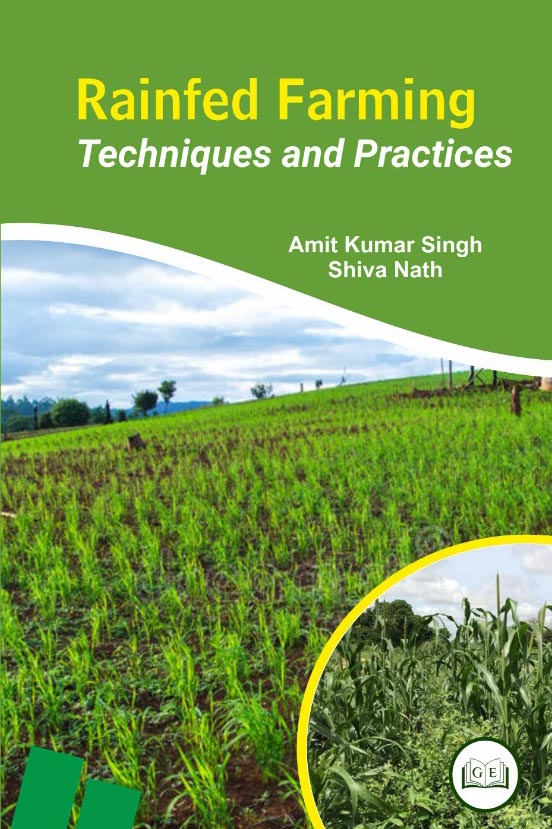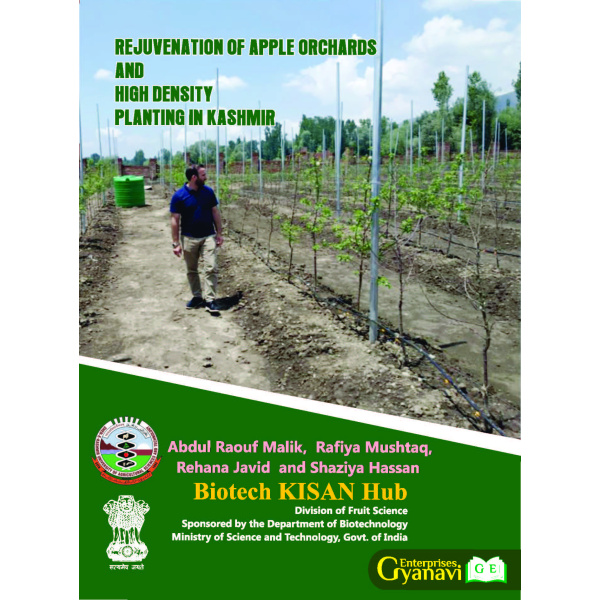“MCQs in Horticulture: includes Memory Based Previous Years Papers of JRF/SRF/NET/AIEEA PG – 2022” has been added to your cart. View cart
Add to Wishlist
-12%
Agricultural Engineering Solved Papers Objective Type
Publisher: Jain Brothers
₹495.00 Original price was: ₹495.00.₹440.00Current price is: ₹440.00.
Agricultural Engineering Solved Papers Objective Type By P.K. Nishad, S. Mangaraj
Usually dispatched in 2 to 3 days
Safe and Secure Payment Gateway
Categories:
Agriculture, Agriculture Engineering, Books
Tag:
Exclusive
Agricultural Engineering Solved Papers Objective Type By P.K. Nishad, S. Mangaraj
Book information
ISBN 13
9.78939E+12
Format
Paperback
Language
English
Edition
1
Available
10
SKU
GY0103
Related products
-17%
Rainfed Farming: Techniques and Practices
This book analyses common rainfed farming systems and defines the principles and practices important to their effective functioning and management. The chapters of the book have been selected and arranged in such a manner as to lead the students through the entire gamut of rainfed agriculture supported by suitable examples and diagrams. The topics covered are most relevant in view of growing interests of rainfed agriculture technologies. The focus is on new concepts and approaches in dryland and rainfed lands, dryland farming techniques, watershed management and its components, agricultural technology for drylands, drought preparedness and management, water harvesting and its role in rainfed agriculture, integrated watershed management, strategies for mitigating and adapting to climate change in rainfed areas, role of mulching in soil and water conservation, agriculture’s effects on society and economy. The book is also supported with a comprehensive glossary and index in the end. This book will be useful to the students, teachers, progressive farmers, policy makers, extension workers and researchers working on various institutes and different universities.
-17%
Rainfed Farming: Techniques and Practices
This book analyses common rainfed farming systems and defines the principles and practices important to their effective functioning and management. The chapters of the book have been selected and arranged in such a manner as to lead the students through the entire gamut of rainfed agriculture supported by suitable examples and diagrams. The topics covered are most relevant in view of growing interests of rainfed agriculture technologies. The focus is on new concepts and approaches in dryland and rainfed lands, dryland farming techniques, watershed management and its components, agricultural technology for drylands, drought preparedness and management, water harvesting and its role in rainfed agriculture, integrated watershed management, strategies for mitigating and adapting to climate change in rainfed areas, role of mulching in soil and water conservation, agriculture’s effects on society and economy. The book is also supported with a comprehensive glossary and index in the end. This book will be useful to the students, teachers, progressive farmers, policy makers, extension workers and researchers working on various institutes and different universities.
-19%
Textbook of Soil Science
Year of Publication 2
This edition is in response to a number of appreciative remarks and useful suggestions made by the readers. In view of the suggestions, the following additions and alterations have been made. Some recent development in the description and characteristics of brown hill soils under forest, soils under forest, soil taxonomy, land degradation and watershed management have been included. The title of Chapter 9 has been changed to Soil Conservation alone, instead of Soil Erosion and Conservation. SI units have been used throughout the book. We have, however, retained quoted data in the original units. We are grateful to our colleagues, students, and other readers who have rendered invaluable help in various ways in the preparation of the second edition.
-19%
Textbook of Soil Science
This edition is in response to a number of appreciative remarks and useful suggestions made by the readers. In view of the suggestions, the following additions and alterations have been made. Some recent development in the description and characteristics of brown hill soils under forest, soils under forest, soil taxonomy, land degradation and watershed management have been included. The title of Chapter 9 has been changed to Soil Conservation alone, instead of Soil Erosion and Conservation. SI units have been used throughout the book. We have, however, retained quoted data in the original units. We are grateful to our colleagues, students, and other readers who have rendered invaluable help in various ways in the preparation of the second edition.
-16%
Rejuvenation of Apple Orchards and High Density Planting in Kashmir
Year of Publication 2
Biotech KISAN Hub project being implemented by Division of fruit Science SKUAST-K with financial and technical support from the Department of Biotechnology, Ministry of Science & Technology, Govt. of has been instrumental in increasing in HDAP units in Kashmir from mere 90 to more than 500 covering an area of around 200 ha and rejuvenation units from almost nil to a more than 100 in a short span of 2 years. The apprehensions which were among the farming community have been addressed through regular training and demonstrations carried out by the Biotech KISAN hub for both rejuvenation and HDAP. The farmers in the south Kashmir districts have adopted the HDAP and rejuvenation technology at a faster pace and are currently leading and setting up the trend for all other districts of the valley. The average yield ofHDAP apple and the varieties introduced by Biotech KISAN hub will be around 40-60 t/ha compared to just 11 t/ha from traditional apple trees. The technology has simultaneously been transferred to state departments as well as KVKs. The impact of project activities has been significant in changing the attitude of the state govt. also and is planning to take it as a scheme vigorously. The awareness about both rejuvenation and HDAP was meager in northern districts of the valley and the Biotech KISAN hub team has introduced the first HDAP Units in said districts along with rejuvenation units. It is now expected that the farmers shall adopt HDAP and rejuvenation technology in the future with ease. The state government has decided to take it in mission mode. The HDAP and rejuvenation of apple orchards with new mutant is the future of apple orcharding system in valley and must be adopted in other apple growing regions of India as well.
-16%
Rejuvenation of Apple Orchards and High Density Planting in Kashmir
Biotech KISAN Hub project being implemented by Division of fruit Science SKUAST-K with financial and technical support from the Department of Biotechnology, Ministry of Science & Technology, Govt. of has been instrumental in increasing in HDAP units in Kashmir from mere 90 to more than 500 covering an area of around 200 ha and rejuvenation units from almost nil to a more than 100 in a short span of 2 years. The apprehensions which were among the farming community have been addressed through regular training and demonstrations carried out by the Biotech KISAN hub for both rejuvenation and HDAP. The farmers in the south Kashmir districts have adopted the HDAP and rejuvenation technology at a faster pace and are currently leading and setting up the trend for all other districts of the valley. The average yield ofHDAP apple and the varieties introduced by Biotech KISAN hub will be around 40-60 t/ha compared to just 11 t/ha from traditional apple trees. The technology has simultaneously been transferred to state departments as well as KVKs. The impact of project activities has been significant in changing the attitude of the state govt. also and is planning to take it as a scheme vigorously. The awareness about both rejuvenation and HDAP was meager in northern districts of the valley and the Biotech KISAN hub team has introduced the first HDAP Units in said districts along with rejuvenation units. It is now expected that the farmers shall adopt HDAP and rejuvenation technology in the future with ease. The state government has decided to take it in mission mode. The HDAP and rejuvenation of apple orchards with new mutant is the future of apple orcharding system in valley and must be adopted in other apple growing regions of India as well.





